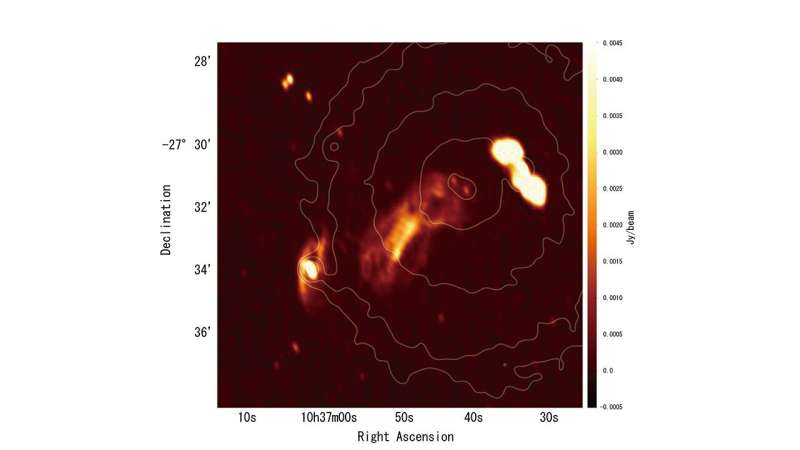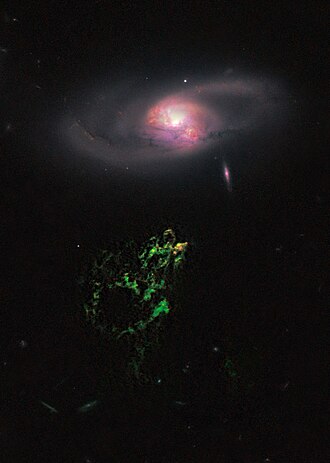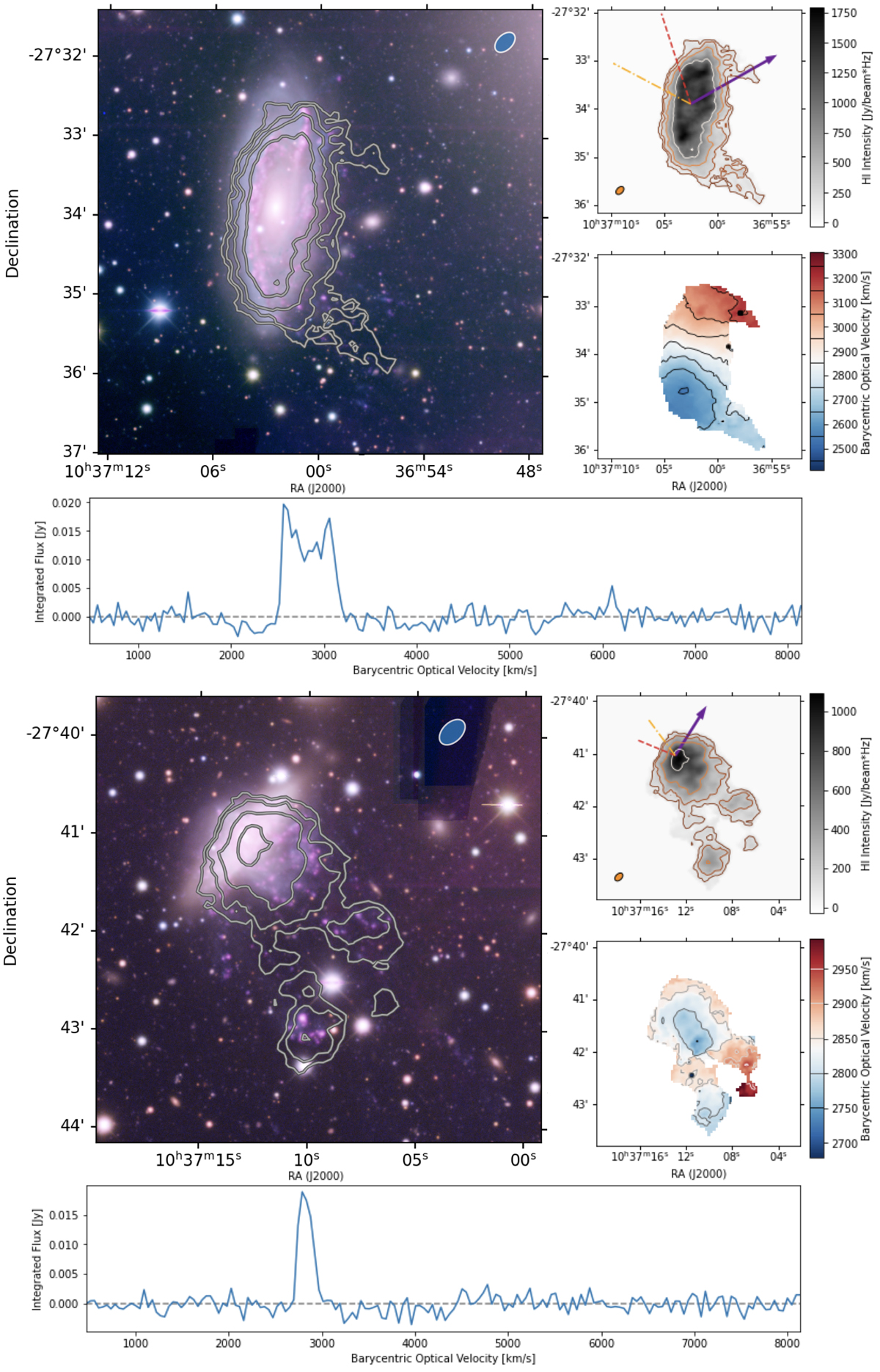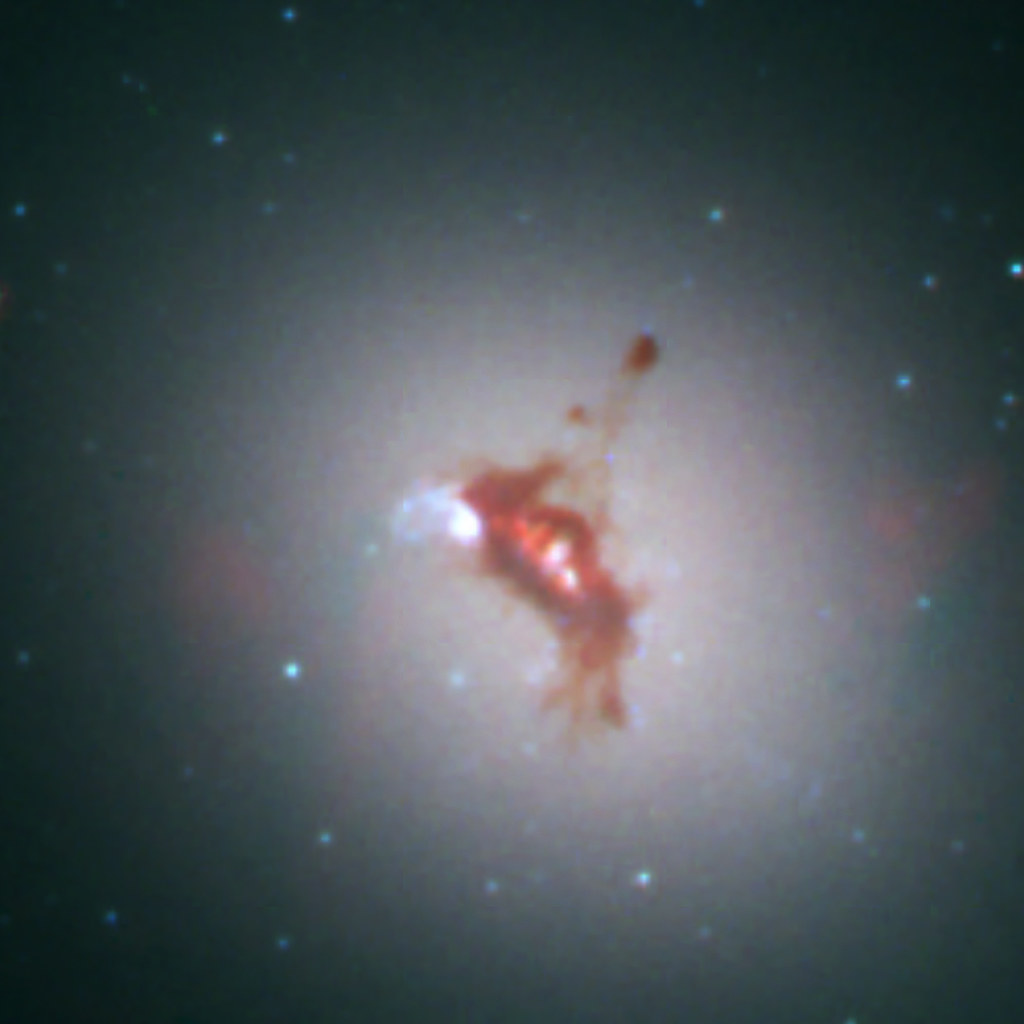AVAO wrote: ↑Sun Apr 14, 2024 7:55 pm
Ann wrote: ↑Sun Apr 14, 2024 4:51 am
Okay! I've given this some more thought. It is clear that the Flying Fox is not quite comparable to Hanny's Voorwerp:
Let's omsider the main differences. Hanny's Voorwerp gives off visible light, which was how it was discovered. The Flying Fox is invisible at optical wavelengths, and was discovered in radio waves. Also, Hanny's Voorwerp looks very patchy and broken, whereas the Flying Fox looks quite "solid". Moreover, Hanny's Voorwerp is located close to just one galaxy, whereas the Flying Fox is crammed between two or three large galaxies.
Since I am a complete amateur, I'll give myself permission to speculate wildly.

Could the Flying Fox be a clump of dark matter that is holding on to a "cloak of gas"?
If this is the case, it must be a very unusual situation. Because if it wasn't, astronomers should be spotting these "foxes" in many places.
Let's consider the original radio image, and compare it once more to your picture:
Note that the central elliptical galaxy, NGC 3311, is very "radio-faint", whereas the elliptical galaxy at right, NGC 3309, is extremely radio loud. This can only mean that NGC 3309 has a very active central black hole. Note, too, that spiral galaxy NGC 3312 is a lot more radio loud than NGC 3311. That suggests to me that the black hole of NGC 3312 is more active than the black hole of NGC 3311.
The way I understand it, it is very unusual that a large and reasonably gas-rich spiral galaxy is located so close to the two dominant ellipticals of a galaxy cluster and so close to a galaxy with a very active black hole. Whatever has happened here, it is probably (say I, the expert

) a consequence of this unusual arrangement of galaxies at close quarters.
Ann
ThanX Ann
I find your comparisons really exciting.
What is interesting is that the nearby galaxies NGC 3312 and NGC3314 both suffer from Ram pressure stripping.
In the X-Ray there is again NGX 3311, which has a very mysterious core.
However, in radio wavelengths NGC 3311 is practically invisible. All very mysterious.
...The discovered radio cloud is therefore just one more mystery in this mysterious cosmic region...
Jac
Ram pressure stripping of NGC 3312 and NGC3314:
Core of NGC 3311
jac berne (flickr) Original data: NASA/ESA (HST)
Thanks again, Jac, how interesting!
Let me start with NGC 3314, which is of course two overlapping galaxies. The large undisturbed mostly edge-on disk galaxy is not part of the action of the Hydra Cluster. But I have long wondered about the shape of the small foreground spiral galaxy.
How can the foreground spiral component be so "compressed" at upper left, and so "extended" at lower right? Ram pressure is the obvious answer.
Now consider NGC 3312:
NGC 3312 is apparently losing gas in (more or less) the same direction where we find the Flying Fox. It is as if NGC 3312 has been falling into the Hydra Cluster from the right or upper right, and as it approached NGC 3311 and NGC 3309, it overshot and passed them.
The Flying Fox could definitely have something to do with the gas that NGC 3312 lost due to ram pressure. Perhaps it is even possible that the black hole of NGC 3309 has been acting up due to the extra helping of gas it received from NGC 3312. And maybe possibly maybe the strange X-ray core of NGC 3311 also has something to do with influx of gas from NGC 3312.
Are you sure, though, that the core of NGC 3311 is bright in X-rays? The picture you posted looks, to me, like an optical picture. I think it looks like a gas cloud that has given rise to relatively high-mass star formation. I think I see signs of jets from from this region of star formation. Could they be
Herbig-Haro objects? As for the X-rays,
star formation does produce X-rays, as seen in the Flame Nebula. X-rays could also be produced by a colliding wind binary, and some may come from the black hole after all.
Let's get back to the radio waves. The Flying Fox is a lot brighter in radio waves than NGC 3311. The way I understand it, we expect radio waves from rotating accretion disks of black holes, as gas, dust and rubble chafe violently against one another. Therefore, NGC 3311 may not have an impressive accretion disk. But if the radio waves from accretions disks of black holes come from material rubbing against each other as it is rotating, maybe something very slightly similar is happening in the Flying Fox? It looks to me as if the "body" of the Fox is striped, somewhat like the striped body of a bee:
Could the "striped" body of the Flying Fox be a sign that it is rotating on its short axis, so that it is
"rolling" like a solid body? And if it is indeed rolling, couldn't this give rise to some chafing and rubbing and therefore to radio waves and magnetism?
Ann










